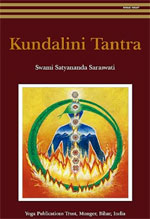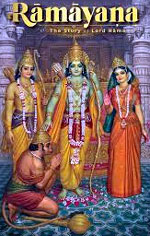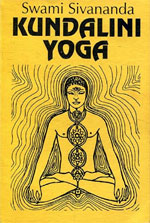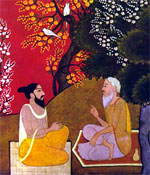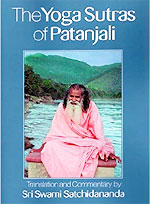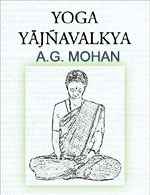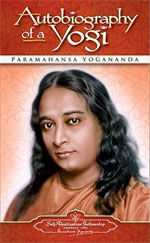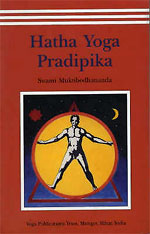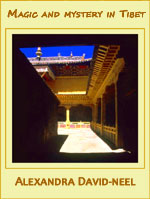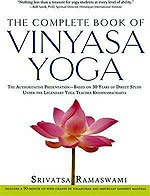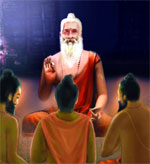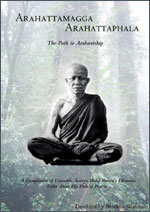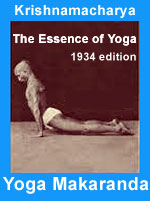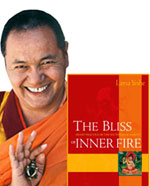
Tummo Yoga
TUMMO YOGA blogs
Overview
I've sectioned this project into 3 parts done simultaneously:
1. rewriting the entire book in HTML as a webpage
2. summarizing and reviewing the book
3. codifying the practice into a teaching format
Yoga Book Reviews
YOGA Book Reviews
FREE online books
BooksFree.org | Project Gutenberg | Open Library | ManyBooks | Free-eBooks.net | Bookboon | Smashwords | PDFBooksWorld | PDF Drive | Google Books
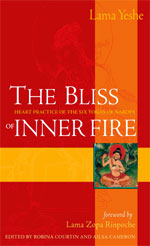 Dec 1, 2021
Dec 1, 2021
THE BOOK SUMMARY
The Bliss of Inner Fire:
Heart Practice of the Six Yogas of Naropa


Author: Lama Thubten Yeshe (1935–1984)
ISBN-10: 086171136X
ISBN-13: 978-0861711369
Genre: Yoga, Mysticism, Meditation
Pages: 224 pages
Country: USA
Publisher: Wisdom Publications; Illustrated edition (June 1, 1998)
Publication date: June 1, 1998
Rating:
![]()
![]()
![]()
![]()
![]() (5 out of 5 stars)
(5 out of 5 stars)
Why a Book Summary?
By summarizing every chapter after I've read the book (as it is presented in the book), I am assured that I understood what I just read. By doing this, I also ensure that I cover the entire book and not be tempted to skip 'boring' sections. By summarizing every chapter in the book and rewriting it in simple terms, I also make sure I understand challenging passages like, "non-self-existence is the original character of all phenomena". Some parts are not an easy read.

Glossary
4 Classes of Tantra - for a particular type of practitioner depending on the intensity of the desire energy used in the path to enlightenment.
- Action Tantra - great bliss is aroused by simply looking at all the beautiful deities
- Performance Tantra - smiling and laughing is used to energize bliss
- Yoga Tantra - blissful energy is generated from holding hands
- Highest Yoga Tantra - fourth and supreme class of tantra, consisting of the Six Yogas of Naropa (evolutionary and completion stages), which must be accomplished in order to achieve enlightenment. The energy of the sexual embrace (consort practice) is used
Six Yogas of Naropa - the foundational basis of these Yogas is the first, Inner Fire Meditation. It is not possible to progress into the 5 Yogas without being established with Inner Fire.
- Inner fire meditation - which is what this book is all about
- Illusory body
- Clear light
- Transference of consciousness
- Transference into another body
- Intermediate state
- Bodhicitta - "enlightened mind", the mind that strives toward awakening, empathy, and compassion for the benefit of all sentient beings
- Clear light - subtle mind able to perceive emptiness where all mental aberrations are removed
- Illusory body - the subtle divine body that is principally developed when a practitioner of Highest Yoga Tantra meditates to attain a body that is white in colour and not the same as his or her ordinary physical body. This new body is the illusory body. It can be perceived only by those who have already attained an illusory body. He can read and memorize many texts located in different locations all at the same time.
- Dakas & Dakinis - male/female divine beings traveling through air. They often accompany the deities.
- Four joys - blissful joy generated by the white bodhichitta drop (aka white essence) as it ascends along the sushumna from the lowest chakra to the navel, heart, throat, and crown chakras - joy, supreme joy, special joy, and innate joy. Prana vayu/kundalini rising?
- Initiation - the transmission of the practice of a particular deity from a tantric master to a disciple, which permits the disciple to engage in that practice.
- Kundalini - drops; blissful energy; also referred to as bodhicitta. Red and white subtle liquid energy that exists throughout the channels of the body, the red predominating at the navel chakra and the white at the crown chakra
- Mahasiddha - maha = great | siddha = a spiritual adept who realizes his siddhis (super natural powers) and develops spiritual and psychic abilities through his practice of yoga and tantra.
- Nada - refers to non-duality, representing your consciousness, manifests like a subtle, blue cloud in space. When you are ready to move from the dharmakaya to the sambhogakaya, visualize that a blue nada appears from the space of nonduality. Unify nada with this blissful blue light and feel that this is you, your sambhogakaya, your illusory body, your psychic body, your rainbow body.
It's a fine line with three curves, sometimes called a squiggle, visualized above the syllable at each chakra during inner fire meditation. - Secret Chakra - there is the tip, secret and middle secret chakras...could be more. It refers to the sex chakra, jewel chakra
- Simultaneously Born Bliss - the fourth of the 4 joys. A state of bliss experienced when, through successful inner fire meditation, the airs have entered, stabilized, and absorbed in the central channel and the kundalini at the crown has melted and flowed down the central channel to the tip secret chakra. This bliss is also experienced when the kundalini is brought back up the central channel to the crown.
- Simultaneously Born Great Blissful Wisdom - the wisdom realizing nonduality unified with simultaneously born bliss
- Six Magical Wheels - 6 hatha yoga breathing exercises needed to be practiced with the 6 Yogas
- Sutrayana - the non-tantric vehicle of Buddhism as outlined in the sutras (discourses and scriptural text of Buddha)
- Tantra - applying the advanced teachings of Buddha to achieve full enlightenment in the shortest time possible. The secret teachings and scriptural text of Buddha
- Tantrayana - Vajrayana; Mantrayana; Secret Mantra; the quick path. The secret teachings of Buddha, the advanced stages of the Mahayana path to enlightenment, successful practice of which can lead to enlightenment in one lifetime.
- Vajra - firmness of spirit and spiritual power, diamond (indestructible) and thunderbolt (incredible power).
- Vajradhara - the tantric aspect of Buddha
Quick Notes (Highlights)
- Tantra only deals with pleasure...not pain and suffering (but I also use anger and very strong human emotions to add fuel to the fire)
- Inner Fire Meditation is far more powerful than samadhi meditation (even if samadhi meditation is done twenty-four hours a day for twenty days)
- Inner Fire is a technique that produces quick results when practiced - it is not reliant on any spiritual belief, rite or ritual
- Six Yogas of Naropa only deals with the subtle body - chakras, channels, nadis, energy winds, syllables. It doesn't deal with the gross body (bones, flesh, blood, etc.) or the very subtle body (only in time of death)
- By control the energies through meditation, we can manipulate the pleasure centers and misery centers by switching them on and off. By controlling the wind energies, you also control the mind - where the wind goes, the mind also goes
- When you know your own body through exercise, breathing and meditation, you can get whatever you want from it. You don’t need to look outside for anything else
- It is important not to ejaculate during sex. If orgasm happens, precious kundalini energy is lost
- In Inner Fire meditation, the Navel is the most important of all the chakras
Book Format
How the book is structured
Book Format
In this book, Lama talks about the enigmatic Six Yogas of Naropa, focusing on the practice of Tummo (inner fire) as the first and foundational of the 6 Yogas. Tummo unveils the nature of inner reality through the development of a refined and penetrating mind. Lama taught the Inner Fire, the first of the 6 Yogas of Naropa, to select students - it wasn't his intention to cover the entire yogas. His emphasis was to practise and not to simply make it an intellectual exercise. His teachings on Inner Fire is divided into 6 parts, and it's only on the 4th part where the actual physical practice takes place. Lama died before he could complete the commentaries on the 6 Yogas of Naropa. It is hoped that his reincarnated Osel will finish it.
Who is Lama Thubten Yeshe?
Short Bio of Lama Thubten Yeshe
Lama Thubten Yeshe (1935–1984)
Lama Yeshe was a Tibetan Buddhist monk who was born in Tibet and went into exile in Bhutan during the Chinese occupation. He later moved to Nepal and founded the Kopan Monastery. In Dharamsala, he founded the Tushita Meditation Center. For teaching the Dharma to foreigners during the 60s, he was criticized by fellow monks as being motivated by money - teaching foreigners was looked down upon by the Buddhist spiritual communities during that time. His teachings were deemed unconventional. In the mid-70s, he moved to California and taught Tibetan Buddhism. His many lectures were transcribed and later published as books. Lama died in 1984, and 2 years later, in 1986, reincarnated into a Spanish boy named Osel Hita Torres, who is now known as Tenzin Osel Hita.
Lama carries a blissful aura around himself that people feel even from a picture. He talks to people at the level they can comprehend - much like Buddha himself when he was still alive. There was no one too stupid or too intelligent for him. He communicated in a manner that the other person can understand. He was open to all traditions and kept an open mind. Lama had already achieved an illusory body allowing him to practice the siddhis of yoga.
Lama Thubten Yeshe's Writing and Teaching Style
Lama Thubten Yeshe's Bio
Writing Style
Lama began learning at Sera Monastery, one of 3 prestigious centers near Llasa, founded by Je Tsongkhapa. He is learned in the sutra (teachings) and the tantra (advanced Buddha teachings to advance enlightenment in the shortest possible time). His pursuit of the tantra focused on the 6 Yogas of Naropa where he attained the Clear Light. Inner Fire is for the most advanced practitioners, but Lama simplified it to his new students. He pursued an open policy that is non-sectarian and universal.
Overview of the Path
Surya vs Tantra
Overview of the Path
All Buddhist teachings go toward enlightenment as the ultimate goal using 2 approaches - sutra and tantra. Sutra focuses on compassion, altruism and understanding. Tantra envisions the state of enlightenment as if it has already happened - this is the fastest way. With sutra and tantra together, the journey is faster and also deeper. While sutra regards ignorance and craving as negative and to be eliminated, tantra sees it as a means to leverage into the spiritual path. However, it is a slippery slope that requires the help of a tantra master and complete compliance to the tantric precepts. When done properly, enlightenment can be achieved even in just one lifetime or just a few years. Tantra is practiced in 4 progressive classes and the most challenging is channeling the intensity of sexual union into a tantric process. Practicing the Highest Yoga Tantra comes in 2 stages - evolutionary and completion. In evolutionary, one emlulates the virtues of the diety he desires as though he already possesses them. Emptiness is the absence of our misconception/ignorance that what we think of ourselves and our existence is reality - our thinking needs to transcend this. The practice of tantra involves emptiness-yoga and deity-yoga where we dissolve our preconceived notions of our limited selves and replace it with the qualities of the deity we admire. In the evolutionary phase, the linear process of death-intermediate-rebirth are simulated. But it is only in the completion phase, through Inner Fire, that true reality is unveiled when consciousness gains control of the subtle elements of the non-physical body - nadis, vayus, amrita, etc. Inner Fire also brings the mind to its most penetrating state - the Clear Light where all mental aberrations are removed.
Four Classes of Tantra
- Action
- Performance
- Yoga
- Highest Yoga Tantra
- Evolutionary Stage
- Emptiness meditation
- Dharmakaya body (death)
- Samboghakaya body (intermediate stage)
- Nirmanakaya bodey (rebirth)
- Becoming Buddha
- 6 Yogas of Naropa (Completion Stage)
- Inner Fire meditation
- 2
- 3
- 4
- 5
- 6
- Evolutionary Stage
PART ONE
The Six Yogas of Naropa
Tantra and Inner Fire
Tantra is the fastest way to enlightenment. Inner Fire is the foundational yoga to the 6 Yogas
Tantra and Inner Fire
To his most advanced students, Buddha taught Tantrayana/Vajrayana - the fastest way to enlightenment. Instead of aversion to pleasure, tantra uses pleasure and control it to make a speedier path to enlightenment (tantra only deals with pleasure and not with pain). Tantra works with human desire for pleasure. Tantra not only works with pleasure, it harnesses pleasure to work with. Inner Fire, even though it's only one of the 6 yogas of Naropa, is the foundational yoga for the rest, much like Muladhara Chakra is the foundational chakra from which all the other chakras are activated upon. Inner Fire enables prana vayu to rise up through the sushumna. Inner fire is tummo in Tibetan, and the literal meaning of tummo is "brave female". Tummo is instantaneous - the results are readily experienced. You increase the kundalini power and inner heat. It is also scientific because results will be produced when practiced - it is not reliant on any spiritual belief, rite or ritual. Inner fire meditation is the fundamental path to enlightenment. Tummo is very powerful but surprisingly easy compared to other forms of meditation. The results are fast. Tummo is a doorway to an infinite horizon - manifesting desires and realizations become readily accessible. According to Milarepa, inner fire meditation is far more powerful than samadhi meditation (even if samadhi meditation is done twenty-four hours a day for twenty days). Inner fire meditation will change your entire notion of reality.
The Six Yogas and the Mahasiddha Naropa
Genesis of the 6 Yogas and the Bio of Naropa
The Six Yogas and the Mahasiddha Naropa
The 6 Yogas originally came from Buddha and was passed on through generations until it reached an Indian yogi, Tilopa, and then his student, Naropa who codified it. It was passed on to Naropa's student, Marpa, who then passed it on his student, the infamous, Milarepa. There are many versions of the 6 Yogas depending on whose time frame or yogi being quoted, but ultimately, for as long as the practice is done according to tradition, it doesn't matter how it is categorized or by whom.
This interpretation of the Six Yogas is done by Lama Je Tsongkhapa through his commentaries. His commentaries quotes the lineage lamas (Tilopa, Naropa, Marpa, Milarepa) and sacred scriptures, so confidence is high that these commentaries are accurate and reliable.
Naropa was intellectually realized. He was a top university professor at Nalana, extremely knowledgeable and could out-debate anyone. But he felt something was missing. Through chanting Heruka's mantra, a voice called out and instructed him to seek Tilopa who would be his guru. Naropa became Tilopa's disciple for 12 years until he was initiated - by a whack on the head by Tilopa's scandals. This caused Naropa to sink into deep meditation for 7 days. After that, Naropa was an enlightened man.
Naropa's narrative has a powerful lesson - that intellectual realization, without the pursuit of spirituality leaves a void. Knowledge for knowledge sake, without leveraging from it, is only half the battle.
The Mahasiddha Je Tsongkhapa
The life of Lama Tsongkhapa
The Mahasiddha Je Tsongkhapa
The western world wrongly relegates Lama Je Tsongkhapa as a mere intellectual philospher together with his followers. This is not accurate. Lama Tsongkhapa was a great yogi, a mahasiddha, a devote tantric practitioner, who wrote extensively on tantra (not so much on sutra). He has exhibited siddhis by averting floods, avalanche, and even extinguishing fire from a burning temple. It is believed that when one has mastered the elements within (fire, air, ether, earth and water), he also has mastery of the elements outside. He also had psychic powers demonstrated when he knew he would be summoned by the emperor of China - so he just disappeared into the mountain.
He had thousands of followers who gave offerings to him, but he gave them all away, owning nothing, having nothing. He was a perfect example of a renunciate.
His death was extended by 3 more years due to the intervention of many ascendant Buddhas - he was initiated to receives boundless energy to extend his life. Finally, when he died, Je Tsongkhapa put everything in order and fully accepted his death with no remorse, regret, aversion or resistance. In dying, he also predicted what would happen in 500 years - which actually happened - the return of the relics to India.
In a vision after dying, his disciple, Khedrub Je, was instructed to practice and preach the teachings instead of feeling sad over his master's death. There have been many ocassions when Lama would appear to Khedrub in a vision to give answers, teachings and initiation.
The Point Is to Practice
Intellectualizing/studying and practice go together
The Point Is to Practice
Mahasiddhas provide a good example on how to practice because there will be times when things are not clear. Intellectualizing/studying and practice go together - intellectualizing alone is not enough. Many scholars can be extemporaneous when expounding on the tantras and sutras, but they have no practice and sometimes have to go to beggars on the street seeking guidance on the practice. When you clearly understand a subject, you should hold it in your heart and practice it - don't try to know ALL the subjects (which can take decades) before you start practicing.
PART TWO
Preliminary Practices
Preparing the Mind
Lama Je Tsongkhapa’s commentary, Having the Three Convictions
Having the Three Convictions
- Preliminaries - once we have established the preliminaries, we need to meditate on evolutionary stage yoga
- Common - meditations on the value of human life, renunciation, refuge, loving kindness, bodhicitta, emptiness These should be done in preparation for the tantric practices.
- UnCommon
- general preliminaries - receiving tantric initiation and observing the ethics of the bodhisattva and tantric vows, or samaya
- specific tantric preliminaries (ngondro) - mandala offerings, Vajrasattva practice, guru yoga, water-bowl offerings, and prostrations. Everyday practice is good, but best is to do an intensive retreat
- Main Practices -
Receiving Initiation
A disciple should be initiated first before practicing 6 Yogas
Receiving Initiation
To go deep in the practice of the 6 Yogas, it is essential to receive the four complete initiations:
- vase initiation - emphasizes evolutionary yoga practice
- secret initiation - emphasizes the illusory body
- wisdom initiation - emphasizes clear light wisdom
- word empowerment - emphasizes the unity of the fully developed illusory body and clear light
Without initiation, teacher and student will just dwell on the lower realms. Before a guru teaches the 6 Yogas to a disciple, it is essential that the disciple has already been initiated (not by the guru). Initiation is when a disciple 'walks away' from his previous notions of himself and reality, and embraces the virtues of the diety giving him the initiation. Initiation activates the wisdom and bliss that already reside in the disciple - the guru does not give you any incredible power. (question: Then, what exactly did Tilopa do to Naropa when Naropa went deep into meditation for 7 days when initiated? Tilopa simply "unleased" the wisdom and bliss that was already with Naropa?) When your intention is to benefit others (and not just you), the initiation process is facilitated. When being initiated by a lama, you should see the lama not as a person but the mandala deity himself, eg. Heruka - a radiant infinite blue. Every initiation is different from everyone, depending on your mind. Initiation is serious business - it took Naropa 12 years of service to be initiated by Tilopa. Even if it feels 'fake' to just imagine things during initiation, it is still a good practice...the message is communicated to the brain. With control and awareness, we can use pleasure to bring about enlightenment.
Purifying Negativities
Vajrasattva meditation/chanting is powerful in purifying negatives
Purifying Negativities
To go deep in meditation, you have to purify negatives first and make the right conditions. Negativity exists because we created it - yes, it's a choice we made and a reality we created.
The practice of Vajrasattva purification is powerful in removing negativities. It can be combined with inner fire - inner fire in the morning and Vajrasattva in the evening. The problem I have about chanting the Vajrasattva (hundred-syllable mantra) is I can't speak nor pronounce Tibetan - as you can judge from the video below.
The Inspiration of the Guru
Reading the book is not enough. Having a guru is essential in the practice of Inner Fire
The Inspiration of the Guru
While the teachings of Buddha, down to his lineage are all available, it is not enough to learn only from these texts - the results you get may not be the ones intended. You need a guru to teach it in a way books cannot - tantra is highly technical.
Lama Yeshe was criticized for teaching Westerners as they were perceived to be incapable of understanding Buddha's teachings. Westerners are direct without being disrespectful. This is something Tibetans do not understand.
To meditate on guru yoga, it is suggested to visualize Guru Vajradhara through your guru with all the colors of the radiant light coming from everywhere. This part is too alien for me. I will shut my senses to the outside world and simply look within - perhaps something emanates.
PART THREE
Going Beyond Appearances
Evolutionary Stage Yoga
Transforming Death, Intermediate State, and Rebirth
How does Evolutionary Stage fit into the Tibetan Tantra Yoga picture?
In Tibetan Tantra Yoga, the 4th and supreme section is the Highest Yoga Tantra (HYT), a practice widely regarded as a passage to enlightenment. HYT is done through 2 sections. The first one is Evolutionary Stage and the 2nd one is the Completion Stage (The 6 Yogas of Naropa).
What is the Objective of the Evolutionary Stage
To identify oneself as divinity...as a realized person...as a Buddha. This is the difference between sutrayana and tantrayana. In tantra, you already assume that enlightenment has already happened
How is this Objective Achieved?
By visualizing and meditating through the 3 stages of life:
- death (dharmanakaya)
- intermediate stage (sambhogakaya, between death and rebirth)
- rebirth (nirmanakaya)
Why it is necessary to first practice evolutionary stage yoga?
Evolutionary Stage is not even part of the 6 Yogas, but a practice that should be established before you even begin the 6 Yogas of Naropa (the Completion Stage). It is essential to prime the mind, ease the body and create stillness before embarking on the 6 Yogas. Evolutionary Stage Yoga sets the stage for that.
Evolutionary and Completion Stages can both be practiced concurrently - they both make up the Highest Yoga Tantra (4th and supreme class in Tantra).
BRINGING THE THREE KAYAS (bodies) INTO THE PATH
Emptiness Mantra
Before we begin on the 3 kayas (evolutionary stage), it is essential we chant the emptiness mantra. For a non-Tibetan, this is nearly impossible for me (I cannot pronounce the words and the words don't mean anything to me). Instead, I simply chant the OM mantra where I internalize that everything we perceive is simply an illusion - including the body, emotions, memories, feelings and intellect. Nothing is left but awarness and the sound of OM in an empty universe.
What are the 3 phases of Life covered by Evolutionary Stage?
- Dharmakaya (death) - truth body, the blissful, omniscient mind of a Buddha. In this state, you can communicate only with other enlightened beings. You are simulating death.
From emptiness, there is a growing radiance to a white light and soon, everything else is pervaded by this radiance. You dissolve into that white light until the light is you. The white light turns red and the red turns black like night. A light creeps into the dark and heralds a new day in a clear light of death - the dharmakaya state. Everything is just one. There is only one totality. There is no separation. Do not intellectualize when meditating. Visualize and feel it and be it. - Sambhogakaya (intermediate state) - enjoyment body, the state between death and rebirth, lasting anywhere from a moment to 49 days. The light-body in which Buddha appears to bodhisattvas. The higher bodhisattvas can now communicate with you in your sambhogakaya stage.
Now, to transition to sambhogakaya stage (intermediate state, illusory body, psychic body, rainbow body), imagine a blue light permeating everything - including you. The state between death and rebirth. - Nirmanakaya (emanation body, rebirth) - the form in which the Buddha appears to ordinary beings.
from a space of oneness, visualize a reddish white light. And you fuse into this light. And you are being reborn as a returner - transitioning to the nirmanakaya stage of rebirth. Now, You feel the unity of great bliss and great wisdom.
Becoming Buddha
After going through the 3 stages of the life cycle and now being reborn, you identify yourself as a divine being... self-realized...a Buddha. Do not intellectualize. Feel it. See the radiant bluish color emanating from you. Your words are mantra, your thoughts architecture reality, your volition is oneness...no separation. You exude an energy of pure bliss. In your presence, heaven exists - here and now where you are. Your aura empowers everyone to see themselves as divine incarnation. This is now your reality.
Arising as a Divine Being
Identifying as Buddha
You have to identify yourself as a Buddha...your words are a mantra, your mind is pure bliss, your feeling is infinite oneness. This allows you to transcend the physical reality and its trappings. Feel the bliss and oneness within the radiance of a blue light. Visualize that heaven exists now where you are, and everybody is a divine incarnation. Let this be your reality.
The Characteristics of Body and Mind
Beginning the Completion Stage Yogas
The Body
The body can be categorized in 3 layers:
- Gross - physical body, bones, blood, organs, flesh, fat, etc.
- Subtle (vajra body) - nadis, chakras, prana vayu (controlled during Inner Fire Meditation), subtle liquid energy (kundalini drops [red, navel, female] and [ white, crown, male]), amrita. Six Yogas of Naropa only deals with this body.
- Very Subtle - happens at the time of death when three visions arise - the white, red, and black visions. After these, the clear light of death arises. Consciousness is accompanied by subtle wind energy, the most subtle being the wind that accompanies the Clear Light Mind at the heart chakra. This subtlest of winds is the Very Subtle Body.
Controlling the Winds (Prana Vayu)
The more we understand the Subtle Body, the more we can control the energies through meditation. You can learn how to approach the pleasure centers and misery centers and how to switch them on and off. Every cell in the body is talking to you. When you listen and develop an intimate relationship with the body, you can almost tell it what to do. The mind rides on the prana vayu. When we control prana vayu, we essentially control where the mind goes. This is powerful.
The Mind
The mind can also be categorized in 3 layers:
- Gross - five senses of perception which provides a crude judgement of phenomena (e.g. - we only see visible light in the EMS, we only hear from 10-20k htz, etc.)
- Subtle - includes delusions (eg desire), difficult to understand their characteristics and functions and difficult to understand how they hold concepts and how they bring the various problems of life (eg desire - very hard to understand this even though at the intellectual level, it can readily be described and defined)
- Very Subtle - this is the clear light mind, which is inseparable from the very subtle prana vayu in the heart. Everybody experiences this very subtle mind when they die.
Unifying Relative and Absolute
Emptiness and Oneness
Lama Tsongkhapa stresses that the mind has many layers but its absolute nature is emptiness. Everything that exists is part of the same singularity - there is no separation. A flower, although tangible, is the amalgamation of the entire cosmos, the ecology, the 5 elements. Without the cosmos, ecology or any of these variables, there is no flower - thus it's empty. Nothing exists by itself. Nothing can exist separately from the entirety of the whole. Therefore, the separation does not exist - it is empty. There is only oneness - inseparable, infinite and all-encompassing.
"Part of my nature is this tissue’s nature; part of your nature is tissue-paper nature. You probably don’t want to have tissue-paper nature, but in an absolute sense, there is no difference between a tissue’s nature and your nature. This tissue is non-self-existent because it is a dependent-arising. Even though the tissue appears to exist dualistically, it does not have a dualistic way of existing."
PART FOUR
Awakening the Vajra Body
Hatha Yoga
Hatha Yoga in conjunction with the Six Yogas of Naropa
There are 6 hatha yoga asanas (aka Six Magical Wheels) that need to be done while practicing the 6 Yogas. The first exercise is vase breathing and the next 5 is done while holding the vase breath. This should be done on an empty stomach.
6 Hatha Yoga Exercises to complement the 6 Yogas of Naropa
- vase breathing - the only one discussed in this book
- rotating like a wheel
- bending the body like a hook
- the mudra of "vajra binding" (throwing up in the air and dropping down)
- straightening the spine like an arrow in the manner of a vomiting dog
- shaking the entire body and stretching the body and joints to enable a smooth flow of blood in the arteries
Inner Fire Meditation requires a clean nervous system and these breathing exercises forcefully unblock the energy passages. Before embarking on the asanas/breathing, get centered and imagine that you are a realized being already...empty and infinite...a Buddha. Don’t think of yourself as an ordinary person. Visualize the three principal channels and the four chakras. Hold the vase breath with strong concentration - the mind has to be aware at all times. The injuries from a bad fall from a tall height can be averted if the breath is held the right way. Breathing should be slow and through the nose (not mouth). Start slow and easy - don't begin doing full-on - injuries might result. Shake your body well after the final exercise. In tantra, taking care of the body is as important as taking care of the mind. The prana vayu (life energy) resides in the body. When this flows freely within the body, pain and misery cannot happen. When you know your own body through exercise and meditation, you can get whatever you want from it. You don’t need to look outside for anything once you have discovered your own pleasure centers and kundalini power (as Wim Hof himself said, "get high on your own supply"). When we can do this, we can also control the energy of our nervous system during inner fire meditation. It is important be in control during sex. If orgasm happens, precious kundalini energy is lost. When proficiency in hatha yoga exercises is achieved, it is possible for the body to spontaneously break into joyful bliss. This is a good thing, but not a particularly high realization.
Channels and Chakras
Visualizing the 3 main channels and the 4 main chakras
Be a Buddha
Before starting the actual Inner Fire Meditation, compose yourself first as a diety - not an ordinary person. You are a Buddha with all its virtues and qualities. Bow down in humility to the universe, the divine beings and offer yourself - "Let me be your instrument for good".
Hollow Body
Imagine that the body is hollow - an empty transparent shell with nothing inside.
Sitting Position
Sitting on Inner Fire Meditation should be on full lotus. Tongue pressed on the hard palate just above the front teeth. Right hand over left hand below the navel with thumbs touching as they form a triangle (palms facing up? or palms pressed against the body?) Body is upright and not slumping.
Channels
Although there are many energy channels in the body, in Inner fire meditation, we deal with 3 channels only:
- Central channel - aka sushumna in Indian yoga tradition (blue on the outside, red on the inside, straight but transparent and rubbery like an aquarium tube). This extends in front of the spine, from the navel chakra all the way up to the third eye and onto the crown chakra. Although it runs along the spine like the 2 channels, it is implied that the energy runs in opposite direction - energy movement begins at the nostril where the 2 channels carry it to the navel chakra, and from there, the energy enters the central channel and moves up until it reaches the third eye.
- 2 channels - shaped straight but transparent and rubbery like an aquarium tube. They run alongside the left and right of the central channel. They begin at the nostrils, move up to the sahasrara (alongside the central channel), loops down along the front of the spine and turns up when they reach the navel chakra (inside the central channel) and releases the wind energy on the short a. The energy then enters the central channel and shoots up. It is not clear if it moves up to sahasrara and stays there, or if it shoots up beyond the sahasrara, or if it loops down and finds its way to the third eye. Even the yogi practitioners are not unanimous on this.
left channel - white
right channel - red
Hmmm...this is similar to Hindu yoga tradition. The 2 chanels, Ida and Pingala, begin at the nostril and go down along the spine until it reaches its base, the Muladhara chakra. The central chanel, sushumna, begin at the Muladhara chakra, extends up along the spine, hitting all the major chakras until it reaches the sahasrara chakra. The energy transfer takes places at the Muladhara chakra instead of the navel chakra...although if the actual location of the navel chakra is not by the navel but 4 finger-widths below the navel, then, both locations seem to be the same...regardless what name you call it.
Inner fire meditation enables the absorption of the energy-winds into the central channel from the 2 channels (ida and pingala) at the navel chakra - which is actually located 4 finger-widths below the navel. This energy-wind-absorption results in heightened states of consciousness.Chakras
For Inner fire meditation, we focus on 4 chakras.
- Navel - red triangle, female, 64 upward branches. Location is 4 finger-widths below the navel, closer to the spine than to the front of the body. It's important to clearly visualize this location because this is exactly the spot where the air from the 2 channels enter the central channel. Navel is the most important of the four chakras
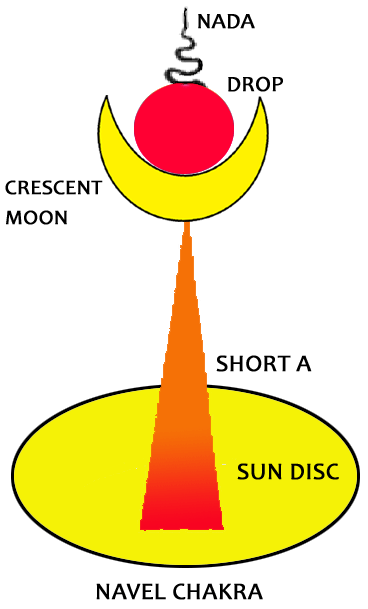
- Heart - white ball, male, 8 downward branches, located at center of the chest closer to the spine than the chest
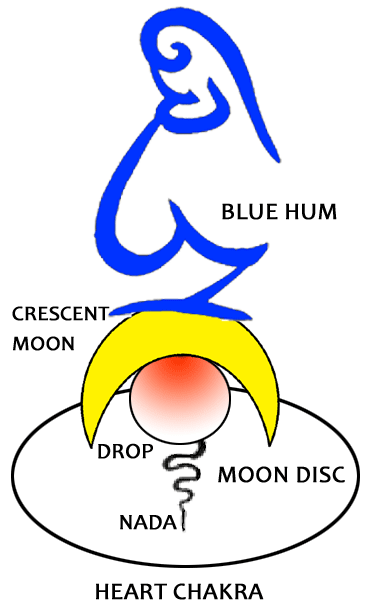
- Throat - red ball, male, 16 upward branches, located directly behind the Adam's apple
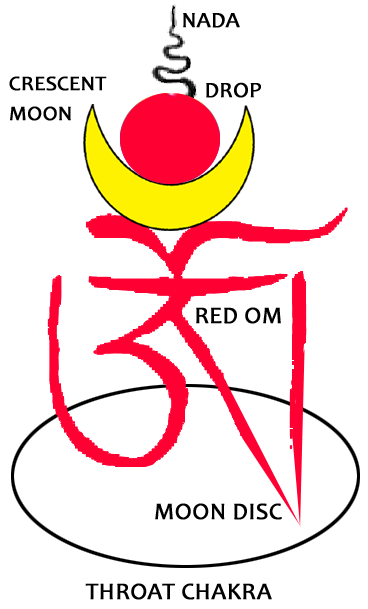
- Crown - aka bliss chakra, multicolored, triangular, female, 32 downward branches. Exact location isn't clear but author feels it's in the brain and not on top of the head - energetically speaking, I agree. I hardly feel anything on top of my head, but inside the head, many sensations can be felt
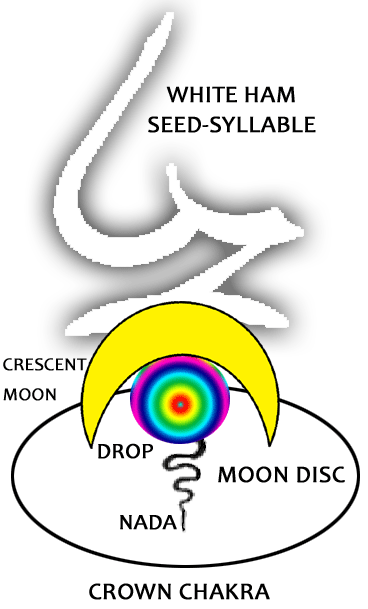
It seems the Third Eye Chakra is not that important in Tibetan Buddhist Yoga. It is mentioned but not focused on.
Training the Channels
We should be able to train our consciousness to move through these channels like riding a bike on a street. How?
- Be the Buddha - radiant with a bluish color, existing in complete emptiness
- Empty the body - the body is an empty transparent shell and the only thing inside are the central channel and its branches, the 2 side channels, and the chakras
- Visualize the channels and its branches - see the clear passage of the central channel from the navel to the top of the head
- Heart chakra - (white ball, male, 8 downward branches), visualize a white-red energy ball, the size of a small pearl that radiates bright rainbow colors. Concentrate on this drop and enter into it, penetrate it, become the energy ball. There is no distinction between you and the energy ball. Everything is set up for deep meditation. As the energy ball at the heart chakra, you look down and see the navel chakra and its 64 upward branches. You look up and see the throat chakra and see the 16 upward branches. You see the passage of the central channel being clear - no blockage.
- Throat chakra - you move up along the central channel and go to the throat chakra. You see the red ball and its 16 upward branches. You look up and you see the crown chakra...and you go up there along the clear passage of the central channel
- Crown chakra - at the crown chakra, you see the multi-colored triangular shape and the 32 downward pointing branches.
- Third eye chakra - you move to the third eye. From there, you look at your radiant bluish Buddha body. You look down and you see your feet very clearly. You feel blissed out.
- Moving up and down the central channel - from the third eye, go back to the crown chakra and move down the central channel back to the throat chakra. Look around again. Then move down to the heart chakra. Look around and see the branches. Move down to the navel chakra...then to the lower chakras, just for a peek. Anything lower than the navel chakra is not that important at this point. But always return to the heart chakra. Make as many trips along the central channel until you become thoroughly familiar and comfortable with it.
As you travel up and down the central channel with this energy ball, the passages are cleaned, tuned and lubed - blocked channels are opened, crooked channels are straightened, and wrinkled ones are smoothed. Everything is cleared.
Ultimately, concentration should be on the navel - not even on heart, throat or crown.
Blissful Syllables
Putting a Seed-syllable in the Chakras
Seed-syllable
In the previous meditation, you traveled to all the chakras and investigated their structure. You are now ready to put a seed-syllable (seed mantra?) at the center of each of the four main chakras. The seed mantra or letters should be small and subtle. This will be the object of concentration. These syllables are not uttered mechanically. You reverberate audibly with your heart and mind with its vibrational frequency until you and the syllable sound are one. When the seed-syllable is established,
- the kundalini nectar will stay in place within the chakra when it starts flowing from the crown chakra through the central channel
- the energy winds (with the mind riding on it) can readily penetrate and activate the chakras
Short A on the Navel Chakra
Again, of all the chakras, the navel is where you concentrate on. Inner heat is activated at the navel chakra. Inner Fire Meditation focuses on this chakra more than any other. The symbol of the short a is fiery red and should be placed inside the navel chakra which is inside the central channel, very close to the spine (and not to the front of the body). This location is important because this is where the airs enter the central channel from the side channels. Also, the heat generated in this location burns steady and profoundly.
And meditating on the short a at the navel increases the strength of the inner fire because it automatically causes energy to come to the crown chakra. Simply touching the area below your navel, you will feel a sensation at your crown.
When you penetrate the navel chakra, the blockages are released, the chakra opens, and the winds automatically enter the central channel.

Blue Hum on the Heart Chakra
Next place a blue hum with a crescent moon, drop, and nada on a moon disc at the heart chakra. The whole thing is upside down. Our eventual aim is, with single-pointed concentration, to energize the dripping of blissful kundalini down through the syllable and the nada. Concentrating on the hum at the heart helps to develop the clear light (emptiness?).

Red OM on the Throat Chakra
Now visualize a moon disk at the throat chakra and on it a red om. This red syllable stands upright and has a crescent moon, drop, and nada above it. Again, it should be visualized in the central channel, right in the center of the throat chakra.Contemplating and penetrating the om at the throat chakra increases the female blood energy and also helps the practice of dream yoga.

White Ham on the Crown Chakra
At the crown chakra, place a white ham on a moon disk. It has a crescent, a drop, and a nada, and again, the whole thing is upside down. Contemplating the ham at the crown increases the white male kundalini, which is the source of bliss.

During Sleep
In Sutrayana, we need to be awake. But in Highest Yoga Tantra (tantra yoga), even during sleep, we can perform the practice - heart and throat chakras are active during sleep.
Reality of the Channels
In reality, the channels are not really crystal clear with open passage ways. The branches obscure their passage ways, sometimes, they are withered in some areas, crooked in some, shriveled and wrinkled, etc. By focusing on the central and side channels, and when we do the breathing practice, we open up the passageways and straighten the channel shape from the navel all the way up to the crown - like blowing into a balloon to dilate its volume. As the wind dilates the channels, the wind brings along the mind, thus consciousness penetrates the channels/chakras, allow them to activate. Sometimes, energy winds can flow the opposite way resulting in pain or sickness. This is why it is essential to be established in the following preparatory practices:
- empty-body meditation
- vase breathing
- hatha yoga exercises
- meditations on the channels, chakras, and syllables
The mind goes where the energy-winds go. By penetrating the chakras with the energy-winds, we also take the mind into the chakras. With consistent and persistent practice of the above, the body and mind will adopt and internalize, making the practice a lifestyle choice...like riding a bicycle.
Vase Breathing Meditation
Vase Breathing
Significance of Vase Breathing
Vase breathing meditation is the first of the six hatha yoga exercises according to Having the Three Convictions. The other five hatha yoga exercises are performed while holding the vase breath, and, most important, the inner fire meditations are performed on the basis of this breathing technique. Successfully bringing all the airs into the central channel depend upon vase breathing.
9-Round Breathing: Dispelling Impure Air
Before attempting to practice vase breathing, you should first dispel all the impure airs with the nine-round breathing exercise.
- Surya Bhedan Pranayama - 3 rounds, in-breath on the right nostril and out-breath on the left. Visualize desire coming out from the exhale
- Chandra Bhedan - inhale left, exhale right. Imagine the removal of hatred on the exhale
- both nostrils - 3 rounds, inhale and exhale getting rid of ignorance
Total 9 rounds.
Being Buddha
visualize yourself as the Buddha and make a vajra fist. Visualize clearly the three main channels and four principal chakras. Concentrate on the short a in the navel chakra inside the central channel.
4 Steps to Vase Breathing
empty stomach with straight back:
- inhaling - inhale through the nose, slowly and gently until the lungs are full
- filling - the right and left channels are packed with air, like inflated balloons
- milking the air - swallow a little saliva, tense the diaphram to push the air down towards the navel (doesn't sound like an Uddhiyana Bandha). Feel the energy-wind is pushed from the two side channels into the short a at the navel chakra. Still holding the breath and pressing down with the diaphragm, tighten the lower doors by contracting the pelvic muscles (sounds like Mula Bandha). This brings together the lower airs with the upper airs at the navel chakra. Feel that the short a is magnetizing the air energies, drawing them all into the central channel. Imagine that the upper and lower airs unite precisely at the short a, which is in the navel chakra in the central channel. Hold your breath while tensing the upper and lower muscles for as long as you can.
- exhaling - when you can no longer comfortably hold your breath, you should exhale (slow then fast) through your nostrils, visualizing that the unified upper / lower airs held at the short a shot up straight to the central channel like an arrow. They are completely absorbed inside the central channel, generating much bliss.
PART FIVE
Discovering Totality
Inner Fire Meditation
Step-by-step DIY Practice of Inner Fire Meditation
Pre-requisites for Inner Fire Meditation
When we are already established in the following, then we can proceed with Inner Fire Meditation:
- familiarity with the passageway within the central channel and the 2 side channels
- proficient with the syllables within the chakras - shape, color, sound, location
- vase breathing
While the evolutionary stage is like dreaming (to prime the mind), the completion stage is like an actual rocket being fired - it's real and powerful. A successful inner fire meditation (the first of the 6 Yogas), brings the wind energies into the central channel, and produces the following:
- accomplishing the rest of the other 5 Yogas
- attaining the 4 Joys
- realizations/wisdom
- activates the siddhis
- quickly attain indestructible samadhi because the mind stays where the wind energies are...inside the central channel (and it cannot go anywhere else while the winds stay at the central channel)
- gives you a high that you would want to keep staying at the navel chakra
While airs can be introduced at the different chakras, entering the central channel through the navel chakra is the safest and easiest.
Preparing for Inner Fire
- Primed body - empty stomach, seated in padmasana, spine vertically aligned
- OM & Emptiness - chant OM and dissolve into emptiness, going through the 3 cycles of life...death (white, red, black, clear light), intermediate stage (blue light), and rebirth (reddish white)
- Being Buddha - from emptiness, arise and identify yourself as a Buddha with a radiant blue light...and everything is one...no separation
- Lineage gurus - from Buddha to Tilopa, Naropa, Marpa, Milarepa, Gampopa, Lama Je Tsongkapa, all the lineage gurus emanate
- Dissolving into Buddha - all the lineage gurus dissolve into Buddha and a radiant white light is cast into your crown chakra, radiant red light into your throat chakra, and radiant blue light into your heart chakra
- Sankalpa - meditate on the desire that all sentient beings discover Inner Fire...that the winds are brought inside the central channel where they are stabilized and absorbed
- Crown Chakra - meditate on the white ham inside the crown chakra located inside the central channel...upside down, from the top...the white ham, a crescent moon, the rainbow/white drop, nada on moon disk. The channel is clear and unobstructed. Imagine a white light emanating from the ham syllable...its radiance filling the whole crown chakra, eliminating darkness and blockages. Every brain cell is activated with energy and bliss. It reaches down to communicate with the throat chakra.

- Throat Chakra - meditate on the throat chakra with its radiant red om on a moon disc, upright crescent moon, the red drop and the nada, facing up and communicating with the Crown Chakra. This bond clears all blockages and instills bliss and oneness.

- Heart Chakra - meditate on the upside down blue hum of the heart chakra on a moon disc. The hum rests on the crescent moon, on the reddish white drop and the nada. It communicates down to the short a at the navel chakra. There is bliss and oneness as it radiates a blue light.

- Navel Chakra - penetrate the short a inside the navel chakra. Meditate until your consciousness and the short a become one. The short a is intensely hot and brilliant, bringing vitality and energy.

*** There are 4 mediations to realize the Inner Fire: - Igniting the Inner Fire - start with vase breathing, filling both the side channels with energy winds. Also visualize that in the inhale, energy is also being drawn in from every pore on the skin. Swallow your saliva, and with that downward movement, continue to press down the energy wind to the navel chakra by contracting your abdominal muscles (hmmm...'contracting down the abdominal muscles' is different from engaging Uddiyanna Bandha which is what Hatha Yoga is suggesting...to essentially pull the belly in and lift up all the organs to create a hollow on the belly. Hmmm...this is contradictory. Which one should I do?) At the same time, contract the butt cheeks and anal muscles (same as Hatha Yoga's Mula Bandha, so no contradiction) to create an upward pressure. The downward pressure and upward pressure together with all winds drawn from everywhere else within the body are unified on the navel chakra and creates heat on the short a. The sustained pressure intensifies the heat on the short a until it becomes so hot and a radiant bright red. At this point, you become the short a - feel the heat and pressure on your entire being. Keep this penetrative awareness on the short a. Don't intellectualize...feel and internalize.
On the exhale, make it a forceful exhale, visualizing that the winds enter through the central channel where they are stabilized and absorbed. The central channel and all the chakras within it (heart, throat, crown) are glowing with the radiant bright red from the short a. Repeat the breathing several times.
Build the heat slowly but surely. Don't jam it at the get go. If you perspire, it means you pushed it too aggressively and you only generated superficial heat. - Blazing the Inner Fire - now that the short a has ignited, we keep it blazing through the vase breathing. You and the short a are one and inseparable. Take all your desires and anger with the inhale and let them burn inside the short a. Engage the contractions as the short a absorbs all the winds, the desires and the anger. Let them burn as the short a intensifies its heat. The more heat generated, the more bliss you feel. The heat becomes so intense, the blaze explodes into a blaze inside the central channel, melting the kundalini drops in the heart, throat and crown chakras as you chant the seed mantra in each chakra. As the air is emptied, engage mula bandha and feel more bliss. Your union with the short a causes your consciousness to be subtle, deep and clear.
Keep in mind that you no longer have an ordinary body. You are a divine incarnation of the Buddha. Your union with the short a raises your super consciousness into a heightened perception. As thinking and thoughts cease, there could be visions of the Evolutionary Stages of life - white, red and black. Just let go and let the visions take over. - Blazing and Dripping the Inner Fire - continue with vase breathing, ingesting fresh wind and incinerating the short a until the kundalini drops melt. The fire razes up the heart chakra, wrapping itself 3x around the blue hum until kundalini drops melt from the blue hum, to the crescent moon, the drops and drips from the nada and drips on the short a at the navel chakra. This is like pouring gasoline on a fire and the heat turns up even higher....generating higher bliss and causing more kundalini drops to drip down.
At this point, thinking stops and is replaced by pure bliss of no separation. The bliss intoxicates and a reassuring radiance permeates.
Repeat vase breathing and experience a more intense flame that goes all the way up to throat chakra and wraps around the red om 3x. The heat intensifies and melts the kundalini drop down to the heart chakra and then down to the navel chakra. This further intensifies the heat the cycle repeats itself into increasing levels of heat.
Repeat the vase breathing and let the heat rise so intensely high it reaches up the crown chakra and the wisdom of oneness prevails. The increased heat drips kundalini down the throat chakra and down to the heart chakra and finally, to the navel chakra. Now, the entire central channel is blazing with heat, resulting in more kundalini meltdown which feeds more on the fire. This raging heat forcefully takes in more winds into the central channel and all the chakras are ablaze with fire and intense heat. All this is happening as you are the short a in the middle of all this firestorm. - Extraordinary Blazing and Dripping the Inner Fire - resume doing vase breathing, being intensely aware that your consciousness and the short a are one. Inhale fully and engage the uddiyana bandha to push the winds down. Engage the mula bandha to push the winds up. This creates increased pressure on the short a where incredible heat is generated. The heat shoots up to the heart chakra which melts the kundalini drop down to the navel chakra which causes it to burn even more, creating an intense heat reaching all the way up the throat chakra where its kundalini drip into the heart chakra and into the navel chakra. This becomes a continuous loop with ever increasing blaze that goes up the crown chakra where more kundalini drop drip down to the lower chakras until it reaches the navel chakra. The whole body is ablaze with intense and explosive heat - from the navel going up to the crown chakra and from the navel going down to the feet. The chakras, the channels and the hollow body are filled with intense heat and fire. The entire time, your consciousness is one with the short a. There is no separation and this unity brings about radiant bliss. You are immersed into this bliss and wisdom of reality as it really is.
Third Eye Chakra
Next, visualize that your third eye chakra and your right nostril shoot out an inner fire in all directions within this universe, reaching the lineage lamas - Tilopa, Naropa, Marpa, Milarepa, Gampopa, and the great yogi Lama Je Tsongkhapa. Their bodies absorb this inner heat through their left nostrils and melts the kundalini in their 4 chakras. This inner heat is then shot from their right nostril and is captured by your left nostril where it penetrates the crown chakra, the throat chakra, the heart chakra and the navel chakra. Kundalini drops melt and feed into the intense heat. Great bliss emanates.
Again, do not intellectualize. Feel and be the short a. Repeat vase breathing again and again until it becomes second nature and effortless to visualize.
- Metta - extend compassion by wishing all sentient beings to realize inner fire within themselves.
Good Things and Bad Things Can Happen
The Good, the Bad and Letting Go
Practice and Do Not Intellectualize
You have to do the practice and not intellectualize. The practice will guide you deeper, letting you know the dos and don'ts. Don't force anything otherwise you'll end up with superficial heat. Just let go and proceed gently but surely. At some point, the process will happen automatically. Remain focused on the short a at all times. Initially, it can be difficult, but with repeated practice, inner fire meditation happens effortlessly. At some point, you won't even need to do vase breathing. With regular practice, Inner Fire will happen just naturally from contemplation and all the benefits will be there - bliss, intoxication, oneness, emptiness. Continue the practice until this point is reached.
Inner Heat vs. Ordinarty Heat
When the practice is done right and not forcefully, Inner Heat will inevitably happen. When kundalini melts, bliss and oneness unite. When the fire rages on, we burn everything we don't need - anger, revenge, resentment, the need to be right, the need to impress. We burn out all our garbage. When all this negative energy enters the central channel, it is tranformed and perfected and it can no longer be harmful. Inner Fire should start out subtle and gentle. And then it builds up in intensity and heat...until the chakras, channels and the entire hollow body are ablaze. During Inner Fire, press slightly on your navel chakra - it enhances the bliss and triggers the crown chakra.
Ordinary heat is not useful to our practice. It feels painful and uncomfortable. If you feel that, then your prctice is not right. Sometimes, this happens. It's ok.
Bliss and Non-Duality
When heat begins, bliss also happens. When bliss happens, we should concentrate on nonduality....oneness...no separation. If we don't equate bliss to nonduality, we can become obsessed with the pleasurable intoxication of inner fire.
Telepathic Experiences
During Inner Fire, it is possible to go into a dreamlike state as though we have telepathic power. We might even get a drift of what other people are thinking. We can even see the different colors of the prana vayu. Our nervous system can be seen as clearly as watching tv. This is because we drift into a realm with telepathic energy. But without the skill of single-pointed concentration, it is not clairvoyance, but a kind of near-clairvoyance. So don't brag about it. Activating the navel chakra develops telepathic siddhi.
Just Let Go
Whatever else happens, stay focused on the short a. Don't get distracted by visions, good or bad. Or experiences, painful or blissful. Anything can happen during Inner Fire meditation. Don't overthink what's happening. Just take them all as part of the process. Just keep focused on the short a.
Simultaneously Born Great Blissful Wisdom
Winds enter the Central Channel, stabilize, and be absorbed
Enter, Stabilize and be Absorbed
A successful inner fire meditation requires 3 things to happen to the winds:
- enter - if the air passes clearly through both nostrils, not just one and no blockages
- stabilize - if the breathing becomes subtle and subdued, when there is no more breathing, when the abdomen stops moving, when our concentration becomes very focused
- be absorbed - when we go through dissolution of our aggregates and transition to the dharmakaya stage - white, red, black and clear light spontaneously (we don't induce it anymore). It could feel frightening to the newbie thinking he is dying but no, it won't happen. Nonduality becomes a real experience and not just conceptual thinking.
Siddhis
When you stop breathing through the lungs, you can continue to breathe through orifices in the body - ears, pores, etc. If you can generate fire within, you can also extinguish fire outside (like stopping fire from a burning house). You can also go through solid objects.
4 Joys
When the chakras are all on fire and kundalini drips from the crown to the throat, to the heart and down the navel and to the secret chakra, then the 4 Joys happen where bliss is ultimate.
- joy - when kundalini flows from crown chakra to throat chakra and bliss and nonduality is experienced. Stay for awhile before moving on
- great joy - when kundalini flows from throat chakra to heart chakra and again, bliss and nonduality unite. Don't rush out, stay there and savor it
- extraordinary joy - when kundalini flows down to the navel chakra and bliss unite with wisdom. Meditate on emptiness and feel reality the way it really is
- simultaneously born joy - when kundalini from the navel chakra goes down the secret, middle secret and the tip secret chakras. This is the super bliss and super wisdom. Once the kundalini has been absorbed, it can no longer be lost outside the body.
Reversing the Flow of Kundalini
when the kundalini drops reach all the way down to the tip secret chakra and you are immersed in absolute bliss and wisdom, reverse the flow back to the navel chakra, heart chakra, throat chakra and ultimately the crown chakra. Stop and meditate on every chakra as the kundalini finds its way up. When it reaches the crown chakra, again, immerse in absolute bliss and wisdom of nonduality. The sensation of moving the kundalini up is more powerful than the journey going down.
Simultaneously Born Great Blissful Wisdom
With the complete cycle of kundalini, the yogi has already experienced a glimpse of real wisdom and not merely conceptual. However, more practice is needed to make it a full realization of nonduality wisdom. Practice...practice and practice until inner fire becomes 2nd nature. With Inner Fire, the 2 main objectives are bliss and nonduality (wisdom, no separation, oneness).
Becoming Vajradhara
Transformation into Vajradhara
Taking a Consort
Consort practice should only take place when the yogi is already established in all the foregoing - from Emptiness Meditation to reversing the flow of the kundalini drops back to the crown chakra. Others argue that the heart chakra should also open up before taking a consort (harder). So, if the energy movement is already happening, and bliss and wisdom are already attained, why bother with a consort? The practice becomes more intense (beyond expression, beyond all concepts, beyond words) and the pace becomes accelerated. Both partners, however, should be at the same level. Once union with a suitable consort is successful, all it takes is to remember the episode and the entire bliss is experienced all over again - you don't need to be physically with that consort again.
PART SIX
Living with Inner Fire
Your Pleasure Is Your Responsibility
Owning up to your desires and pleasures
Practice
At this point, all the lessons should have been learned, and with continuing practice, spiritual growth is ensured. But you have to practice...not just intellectualize. It is possible to attain enlightenment through Inner Fire in just a year or in just one lifetime. Inner Fire is a technique, not a spiritual belief. Therefore, you will achieve results even if you are not religious. The techniques are in compliance to the natural laws - anyone can achieve it.
Practicing both Evolutionary Stage (in the morning) and Completion Stage (in the evening) brings maximum benefits.
Sometimes you won’t need any of the techniques. Just with natural, subtle breathing, your concentration will be reasonably good, your inner fire energy will grow, and you will feel blissful. You learn to let go of many things until you experience emptiness (not just think but experience).
Tailor-fit your practice to represent your truth - as long as you are still compliant with the tenets of the practice. Make the practice, your OWN. What society or anyone else says you should do is not important as long as you are not harming yourself or anyone else.
Successful inner fire meditation brings physical as well as mental health because the kundalini is fortified. You become physically strong and your resolve is strengthened. The body is the source of simultaneously born bliss - thus, it needs to be kept strong.
Never Forget Inner Fire
Keeping the Inner Fire at all times
Keeping the Flame Alive
Meditate as much as possible on Inner Fire. Make it a lifestyle choice. Even in between meditation sessions, be mindful of Inner Fire...as you wait on a line, as you chill on a park, etc. Create a meditation box if need be. Results should be obvious with regular practice. If there are no benefits, then there is something wrong with the practice - read the book again. As a beginner, do short sessions everyday - like 90 minutes. As you progress, do it longer. It is best to do asana before Inner Fire in the morning. Avoid eating cold food or drinking cold drinks. It gives the body an added difficulty in generating heat if the body is cold. Avoid acidic foods/drinks like lemon. Avoid fish. Practice to build the kundalini energy. When the energy is strong, you don’t need the meditation techniques - the sheer act of mindful breathing can already trigger the bliss and wisdom.
At the end of the day, what you want is to unite bliss with wisdom. The beauty of inner fire is that you don’t have to believe in anything for it to work - you don't even have to be spiritual. Just do the technical meditations like following a recipe...and let go. The experiences and realizations will automatically come.
Ending Thoughts
In the early years of my yoga practice, I came upon a mention of the Six Yogas of Naropa. I was captivated. What kind of yoga is it? It seemed mystical, etheric and ungraspable. When I tried to research on it, I couldn't find anything on the internet except a few descriptive snippets. It was frustrating.
But now, speculating on the Dalai Lama's mandate that Tibetan Buddhist practices should no longer be secret, but a teaching propagated to the outside world, credible authors like Lama Thubten Yeshe, representing a long line of lineage beginning from Tilopa, have come out with this book. It was mana from heaven.
Some parts are very difficult to understand and there's a lot of names to get familiar with, imagery to visualize and intricate processes to undertake in chronology. Even with my Hatha Yoga (yoga from the Indian tradition) of 2 decades, it was still challenging.
What perked my interest is the claim that this inner fire meditation is so powerful that even a 24/7 deep samadhi meditation for 2 weeks could not compare. This is virtually a hack on traditional yoga!
To ensure I understand the teachings, I rewrote the entire book on HTML, summarized the chapters in my own words, and codified the practice in a teaching format. It's all done now. My next challenge is to develop a consistent practice where I can actually measure the results. So, this is a long-drawn blog that will be updated as I continue to develop and deepen my practice.
--- Gigit (TheLoneRider)
YOGA by Gigit ![]() |
Learn English
|
Learn English ![]() |
Travel like a Nomad
|
Travel like a Nomad ![]() |
Donation Bank
|
Donation Bank ![]()
Inner Fire: The Book in HTML:

![]()
The Bliss of Inner Fire:
(Dec 1, 2021) Lama Yeshe talks about the enigmatic 6 Yogas of Naropa, focusing on the practice of Tummo (inner fire). Tummo unveils the nature of inner reality through the development of a refined and penetrating mind.....more »»
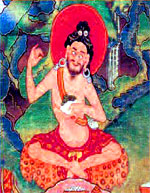
![]()
Tummo Yoga
(Dec 1, 2021) When I fist heard of Tibetan yogis drying a wet towel wrapped on their bare backs as they were exposed outdoors in the dead of winter, I could hardly believe it. I didn't even know what yoga they were practicing. I learned it was Tummo Yoga. But where do I get research materials for it? It wasn't easy, but I found one. Time to roll up my sleeves and generate some heat. My litmus test? Melt the ice on my ice bath and even turn the water warm or even hot.....more »»
Codified Practice

![]()
![]()
![]()
Krishnamacharya: his Life and Teachings
(Apr 7, 2022) This book comes from Krishnamacharya's direct lineage - his student of 18 years (1971 to 1989), A.G. Mohan. Here, Mohan clarifies ambiguities and explains the legendary stories surrounding this great master. The book is focused on the master's life and teaching about Asana, Pranayama, Kriyas, Yoga Therapy and the Mind.....more »»
Chiang Mai INFORMATION
Chiang Mai Map

Chiang Mai, Thailand
Chiang Mai FYI / Tips
- crop-burning season in Chiang Mai is between late Feb to early April. But laws change everytime. This year, 2019, there is a 61-day ban on burning so the farmers started burning early. When my plane was approaching Chiang Mai on Jan 24, 2019, there was already a thick blanket of smog covering the entire city (and beyond). But within the city itself, you won't feel it (but that doesn't mean the air is healthy). To monitor air conditions in real time, refer to site: Chiang Mai Air Pollution: Real-time Air Quality Index (AQI)
- hot season begins March and lasts until June
- wet season begins July and lasts until September
- best time to visit Chiang Mai is mid-September to mid-February - after the monsoon and before the burning
- you have to try Khao Soi, this is north Thailand's culinary staple
- the tourist area where most of the hotels, restaurants, ticket offices, tour operators are, is located in the Old City
- to exchange your dollars to Thai Baht, the Super Rich Money Exchange give the best rates. There are many branches scattered around Chiang Mai
- get a red cab (songthao) outside the train station for Baht 50 (instead of paying B100 if inside the train station) to Old City - if you haggle nicely enough...I did!
- shared red taxi (songthao) - B30 standard fare plying all over Old City
- for only B50/day, best to rent a bike to go around the Old City - it's a 2.5km2 with lots to discover
- FREE daily yoga classes from 9:00am to 10:15am at Nong Buak Hard Park (southwest corner of Old City). Resident and passing-through teachers take turns conducting yoga classes.
Blues/Jazz Bars in Chiang Mai
- North Gate Jazz Coop - at Chang Phueg Gate, great Tuesday jam session, Blues on Sundays at 11pm by the Chiang Mai Blues band
- Boy Blues Bar - at the Night Bazaar. Mondays at 9:30pm is open mic
- My Secret Cafe - near Wat Phra Singh. Tuesdays at 7:30pm for the changing front-act and 9:00pm for the Panic Band
- Taphae East - 88 Thapae Rd. (just north of Night Bazaar). Fridays at 9:30pm by Chiang Mai Blues Band
Chiang Mai Cost Index
- B60 Chiang beer
- B250 1 hour drop-in yoga session
- B200 one hour Thai body massage at WAYA Massage (highly recommended)
- B50 noodle soup with meat
- B50 coffee
- B40 pad thai
- B30/kilo wash-only laundry
- B50/kilo wash+iron laundry
- B100-150 dorm bed/night
- B250 fan room/night
- B30 internet cafe/hour
- B170-190 Movies Sat-Sun and public holidays
- B130-150 Movies weekdays
- B100 Movies Wednesdays (movie discount day)
- B750 1/2 day Thai cooking lessons
- B900-1000 1 full day Thai cooking lessons
- B400 Muay Thai boxing ticket
- B2500 starting room rate at the luxury hotel, Nawa Sheeva (highly recommended)
- B450 bus, Chiang Mai to Bangkok
- B160-180 bus, Chiang Mai to Pai
- B1250 bus, Chiang Mai to Luang Prabang
- B1650 slow boat, Chiang Mai to Luang Prabang
- B210 bus, Chiang Mai to Chiang Rai, 3-4 hours
- B360 Green VIP bus, Chiang Mai to Mae Sai (Thai border town for visa run to Tachileik, Myanmar)
- B50 bicycle rental, 24 hours
- B200 motorbike rental, 24 hours
- B273 #51 sleeping train from Bangkok to Chiang Mai
- B638 #7 a/c train from Bangkok to Chiang Mai
- B50 red taxi fare from point to point
- B100 red taxi fare from train terminal to city
- B2000 full day elephant sanctuary
- B750 Chiang Rai one-day tour
- B1500 mountain biking scenic ride
Chiang Mai Trains by Train36.com
- Chiang Mai trains for Bangkok - 2 day trains, 3 night trains, daily schedule
- Train 14 to Bangkok - departs 5pm daily, arrives BKK 6:15am, 1st class and 2nd class sleeping accomodation, Special Express
- Chiang Mai trains to other destinations -
Chiang Mai to Bangkok Trains
source: railway.co.th- Check Train Schedule & Fares
- Book Online - direct booking with State Railway of Thailand. Best to register first. If going to BKK from CNX, click "Northern Line".
note -- big difference between booking direct with the State Railway and booking with an online 3rd party agent. 12GO was charging B1330 for the same trip that only cost me B941 with the State Railway.
note -- Oct 2022, I took the #10 Train from CNX to BKK, upper berth, 2nd class, a/c, sleeper, B941. The train was clean, fast, comfortable and modern. If you have heavy luggage that will cost more money in flight checkin, I would suggest this train. Otherwise, the flight now is so much cheaper it doesn't even make sense to take the bus or train.
Bangkok to Chiang Mai by Train from Bang Sue Train Station
For more train info: Bangkok to Chiang Mai trains - departing from Hua Lamphong - MRT (Bangkok)
(I'm using Bang Sue as a starting point because I was closer to it, but you may be closer to the Hua Lamphong station)
- take the MRT train to Bang Sue Station. Take the #1 Exit to the north provincial trains
- Proceed to Counter 2. You will see an
information booth, a
train schedule chart and the
ticket counter. Choose the train and pay at the ticket counter.



- daily train schedule:
- 8:48am - #7 Train, arrive Chiang Mai 7:30pm, not sleeper, B638
- 2:06pm - #109 Train, arrive Chiang Mai 4:05am, sleeper
- 6:31pm - #9 Premium Train, arrive Chiang Mai 7:15am, sleeper, B938 upper deck, B1038 lower deck
- 7:56pm - #13 Train, arrive Chiang Mai 8:40am, sleeper, B768 upper deck, B838 lower deck
- 10:22pm - #51 Train, arrive Chiang Mai 12:10pm, sleeper, 3rd class B270 (non sleeper), 2nd class B438, B728 upper deck, B798 lower deck
Loei to Chiang Mai by Bus
- From Loei town center, take a tuk-tuk ride to the bus station, B30. There is only one bus station.
- As of June 28, 2020 (still on Covid schedule), there are only 3 night trips: 8:30pm, 9:30pm and 12 midnight. 9 hours, B470.
- The bus makes the following stops at the following times from a 9pm Loei departure: Phu Ruea (9:50pm), Phitsanulok (12:40am), Uttradit (2:20am), Lampang (4:35am)
- Final bus stop is at the Red Bus Arcade, Chiang Mai, 9 hour-trip, arriving 6am (from 9pm Loei departure).
- Take a red songthaew to Old City, B50. They'll try to charge you B100, but they'll take B50 (just assure the driver you won't tell the other passengers).
Chiangmai Blogs by TheLoneRider
- Goodbye Chiang Mai Jan 24, 2019 - Oct 10, 2022
- Chiang Mai Peoplescape Oct 10, 2022
- Siamaya Chocolates Oct 2, 2022 [an error occurred while processing this directive]
- September Snapshots Sep 30, 2022
- Carrot Cake Sep 12, 2022
- Making Coconut Bread Sep 3, 2022
- August Snapshots Aug 31, 2022
- Yoga Nidra with Chunyah and Tom Aug 18, 2022
- Coconut Pancake Aug 11, 2022
- July Snapshots Jul 31, 2022
- Chiang Mai Peoplescape Jul 31, 2022
- Jason, Max and Elizabeth Pizza Nite Jul 28, 2022
- Yakiniku Dinner with Max and Jason Jul 25, 2022
- Icebath at Nawa Saraan Jul 6 - Oct 5, 2022
- June Snapshots Jun 30, 2022
- Tom, Chunyah and Simona Pizza Nite Jun 23, 2022
- Yoga Class Pizza Nite Jun 15, 2022
- Pranayama with Nicha Jun 14, 2022
- May Snapshots May 31, 2022
- Lover's Quarrel May 26, 2022
- Getting Lost on a Hike May 25, 2022
- Biohacker Meetup at 'Living with The Spirit' May 22, 2022
- Music and Magic at Paapu House May 5, 2022
- Breathwork + Icebath @ Alt_Chiangmai II Apr 20, 2022
- April Chronicles 2022 Apr 30, 2022
- Tombstone Epitaph Apr 29, 2022
- Kayaking along the Ping River with the BioHackers Apr 24, 2022 [an error occurred while processing this directive]
- Pizza Nite with Jerry, Paolo and Abby Apr 9, 2022
- Tom Maher's Muay Thai Fight Apr 8, 2022
- Breathwork + Icebath @ Alt_Chiangmai Apr 6, 2022
- Yoga with Leo Apr 5, 2022
- March Chronicles 2022 Mar 31, 2022
- Street Photo Mar 31, 2022
- Peoplescape Mar 31, 2022
- Chiang Mai's Recovering Music Scene Mar 31, 2022
- Street Photo Mar 31, 2022
- Yoga and Fitness Mar 26, 2022
- Friday Bitcoin Meetups Mar 18, 2022
- Pizza Nite with Aida and Sophie Mar 14, 2022
- Pizza Nite with Kevin, Jamie and Kris Mar 10, 2022
- In Search of Genetic Immortality Mar 5, 2022
- February Chronicles 2022 Feb 28, 2022
- Palm-Feeding Wild Birds Feb 26, 2022
- Cuckoo Feb 16, 2022
- Tell John Feb 16, 2022
- Pizza Nite with Kris, Simona and Mary Feb 15, 2022
- Pizza Nite with the Chiang Mai Boyz Feb 6, 2022
- Welcoming the New Year Jan 31, 2022
- January Snapshots Jan 31, 2022
- ABS Fitness Challenge Jan 16 - Apr 16, 2022
- Pumpkin Tahini Recipe Jan 3, 2022
- 2021: A Year in Review Dec 31, 2021
- Pizza Nite with Simona and Lisa Dec 28, 2021
- Tahini Salad Dressing Dec 27, 2021
- Baba Ganoush Recipe Dec 23, 2021
- 7 Universal Laws Dec 20, 2021
- Sacred Circuitry Dec 18, 2021
- Cave-Living in a Boutique Hotel in Chiang Mai Dec 14, 2021
- Tummo Yoga + Wim Hof Breathing + Full-Body Muscle Contraction Dec 13, 2021
- Monk Chat Dec 10, 2021
- Making Tahini and Hummus Dec 8, 2021
- Watering the Plants Hands-Free Dec 2, 2021
- Vietnamese Phin Coffee Filter Dec 2, 2021
- Tummo Yoga Dec 1, 2021
- The Bliss of Inner Fire: Book Summary/Review Dec 1, 2021
- The Bliss of Inner Fire: Heart Practice of the Six Yogas of Naropa Dec 1, 2021
- 'Must Experience' Cafés of Chiang Mai Nov 30, 2021
- British Hobnob Cookies Nov 22, 2021
- New York Cheese Cake Nov 22, 2021
- Dham's Poetry Nov 14, 2021
- Pizza Nite with Simona and Nat Nov 11, 2021
- Stepping Forward / Reaching Out Oct 31, 2021
- Cancel Culture Attack Oct 31, 2021
- Mantra Primer Oct 29, 2021
- Spinal Mobility Oct 7, 2021
- Swedish Cinnamon Rolls [Kanelbullar] Oct 4, 2021
- Just Bring 2 Chinese Oct 3, 2021
- Sep Snapshots Sep 31, 2021
- One-Leg Yoga Asana Sequences Sep 30, 2021
- Pizza Nite with Nut, Monika and Yuki Sep 27, 2021
- 23-Minute Ice Bath Sep 27, 2021
- Pizza Nite with Nut, Simona and Malee Sep 23, 2021
- Yoga Nidra (yogic sleep) Sep 23, 2021
- Making Cornbread Sep 15, 2021
- Kombucha: 2nd Batch Sep 11, 2021
- Making German Stollen Bread Sep 9, 2021
- Pizza Nite with Jackson, Goi and Paapu Sep 6, 2021
- Chiang Mai Peoplescape Aug 31, 2021
- Making Homemade Kombucha Aug 30, 2021
- Wrong Question to Ask This Crowd Aug 29, 2021
- Pizza Nite with Tom, Chunyah and Goi Aug 20, 2021
- Pizza Nite with Moms and Kids Aug 15, 2021
- Bahya Kumbhaka (breath-hold on the exhale) Aug 14, 2021
- Everybody's Only Friend Aug 13, 2021
- Vanillekipferl (German Vanilla Crescent Cookies) Aug 11, 2021
- Fighting Infection through Yoga Aug 3, 2021
- Too Close for Friendship Aug 2, 2021
- Manifesting: Epicurus' Pursuit Jul 31, 2021
- Homemade Rum Raisin Ice Cream Jul 30, 2021
- Ice Bath at Nawa Saraan Healing Space Jul 25, 2021
- Pizza Nite + Slack Line + Hammock Jul 23, 2021
- Yin-Yoga & Hypnosis with Christine Thiel Jul 20, 2021
- Pizza Nite with James and Nat Jul 19, 2021
- Antara Kumbhaka on Nadi Shodan Pranayama: Yogic Breath-Hold on the Inhale Jul 17, 2021
- Moving and Cashing-Out Bitcoin Jun 2 - Jul 11, 2021
- 'The Bow' Yoga Jul 7, 2021
- Yoga Classes with Calum Mar 27 - Jul 4, 2021
- Hike to Wat Pa Thammachat Waterfall Jul 2, 2021
- Pizza Brunch with the Yogis July 1, 2021
- Continuing Friendships in Chiang Mai Jun 30, 2021
- On the Brink of Hunger, the ENABLERS Come to Light Jun 21, 2021
- Hatha Vinyasa Yoga with Katharine Day Jun 17, 2021
- Pranayama Basics II Jun 16, 2021
- 36-Hour Love Life Jun 11, 2021
- Pranayama Basics I Jun 9, 2021
- Biohackers Meetup in Chiang Mai Jun 6, 2021
- Learning How to Breathe Jun 2, 2021
- Not the Usual Day-to-Day Life May 31, 2021
- Morphing Peoplescape of Chiang Mai May 31, 2021
- Breathwork & Ice Bath with Jason Ryer of Zen Strength May 23, 2021
- It's Raining Bell Peppers May 7, 2021
- Yoga Classes with Nana Apr 20, 2021
- You Want to be Wonder Woman? Apr 8, 2021
- Kunjal Kriya / Vamana Dhauti (induced vomiting) Apr 1, 2021
- Coffeemates, Breadmates and Yogamates in Chiang Mai Jan-Mar 2021
- Varisara Dhauti (cleansing of the entire digestive tract) Mar 26, 2021
- Spiritual Backpacker Interview by Napasorn 'Cherry' Suvarnapradip Mar 23, 2021
- Private One-on-One Yoga Classes with Doriana Feb 17 - Mar 14, 2021
- Transformational Life Events Mar 13, 2021
- Guess Who's Coming to Bread Day? Mar 1, 2021
- Mula Shodhana (anal cleansing) Feb 27, 2021
- Are You My Queen? Feb 25, 2021
- Breaking the 5-Minute Breath-hold Barrier Feb 25, 2021
- Kirtan with Chiang Mai's Khun Thai Seekers Feb 7, 2021
- Breaking the 4-minute Breath-hold Feb 7, 2021
- Pranayama Primer Feb 2, 2021
- Heartbreak in every Song Jan 24, 2021
- The Silent Killer is Baaack! Jan 12, 2021
- Learning the Thai Language Jan 9, 2021
- 2020: A Year in Review Dec 31, 2020
- Reversing/Slowing Down the Aging Process Dec 30, 2020
- Hike to Huay Keaw Waterfall Dec 20, 2020
- Yoga Mat Dec 19, 2020
- Hiking to Wat Pha Lat along the Monk's Trail Dec 19, 2020
- Am I Psycho? Dec 9, 2020
- Muffin Man Dec 8, 2020
- Polyamory Dec 4, 2020
- The Wim Hof Ice Bath Dec 3, 2020
- RSVP Nov 25, 2020
- High Intensity Interval Yoga (Yoga + HIIT) Nov 14, 2020
- Cleansing the Nadis (Energy Pathway) Nov 13, 2020
- Yoga for a 360-degree Core Nov 6, 2020
- Edward Witten: 'the smartest living physicist' Nov 4, 2020
- Srinivasa Ramanujan: Mathematician of the Divine Oct 27, 2020
- Bashar as Channeled by Darryl Anka Oct 26, 2020
- Vinyasa Krama and Ashtanga Yoga with Aida Yoga Oct 18, 2020
- Deepak Chopra: author, lecturer, healer Oct 12, 2020
- Facebook Friends Oct 1, 2020
- Chiang Mai Peoplescape Aug-Sep 2020 Sep 30, 2020
- Siddhis (yogic super powers) Sep 30, 2020
- Learning the Import/Export Trade Sep 4, 2020
- Music and Magic at Justin's Birthday Bash Sep 3, 2020
- Biggest Stone in his Shoe Sep 1, 2020
- Abandoned Aug 25, 2020
- Intelligent Romantic Break-up Aug 25, 2020
- Dad-Zoned Aug 18, 2020
- Public Display of Affection Aug 9, 2020
- Gabriella's Birthday Bash at Mothership Resort Aug 8-9, 2020
- Shifting Peoplescape of Chiang Mai July 31, 2020
- Yoga Class for Strength and Muscle Jul 30, 2020
- Yoga Class for Optimum Digestion July 29, 2020
- Yoga Class for Healthy Eyes Jul 27, 2020
- Hippie Night at Nawa Saraan Healing Space July 24, 2020
- The Podcast Series: Alan "Heart Math" Strydom Jul 17, 2020
- Prana Vayu Adhitthana Yoga Class July 11-12, 2020
- Coming Back to Chiang Mai Jun 29, 2020
- Goodbye Chiang Mai Jan 23, 2020
- Prasnopanishad: Understanding Prana Jan 17, 2020
- Hiking the Monk's Trail Jan 15, 2020
- Chaturanga Jan 10, 2020
- You Spooned Me Jan 3, 2020
- 2019: A Year in Review Dec 31, 2019
- Friends, Coffeemates and Breadmates (Dec 2019) Dec 31, 2019
- Visiting Mae Sot Dec 27-30, 2019
- Let's Make it About You - an Epiphany Dec 17, 2019
- Shut-Up! Dec 7, 2019
- Roasted Red Bell Pepper Puree Dec 3, 2019
- Coffeemates and Breadmates (Nov 2019) Nov 30, 2019
- Bhujangini Mudra Nov 25, 2019
- Mathangini Mudra Nov 24, 2019
- Kaka Mudra Nov 23, 2019
- Pasini Mudra Nov 20, 2019
- Aswini Mudra Nov 18, 2019
- Sambhavi Mudra Nov 16, 2019
- Manduka Mudra Nov 15, 2019
- Tataka Mudra Nov 14, 2019
- Sakti Calana Mudra Nov 10, 2019
- Vajroli Mudra Nov 9, 2019
- Coffeemates and Breadmates (Oct 2019) Oct to Nov 5, 2019
- Yoni Mudra Nov 1, 2019
- Viparita Karani Mudra Oct 31, 2019
- Khecari Mudra Oct 30, 2019
- Mahadeva Mudra Oct 28, 2019
- Sacred Cacao - Chakra Dance Journey Oct 26, 2019
- Partner Healing with Natascha Oct 24, 2019
- Maha Bandha Mudra Oct 24, 2019
- Point-Of-Failure Birthday Workout Oct 22, 2019
- Mula Bandha Mudra Oct 21, 2019
- Hugfest at Thapae Gate, Chiang Mai Oct 19, 2019
- Anushasan Mudra Oct 18, 2019
- Ling Mudra Oct 17, 2019
- Jalandhara Bandha Mudra Oct 15, 2019
- Learning Thai with Cee Oct 13, 2019
- Uddiyana Bandha Mudra Oct 10, 2019
- Nabho Mudra Oct 9, 2019
- Maha Mudra Oct 7, 2019
- 20 Essential Mudras by T. Krishnamacharya Oct. 6, 2019
- Mindfulness Gong Bath by Vee (Veerayuth Pongsiri) Oct 3, 2019
- Cuddle Party by Abundant Love CM Oct 1, 2019
- Vayu Mudra Oct 1, 2019
- Visa-Run to Tachileik, Myanmar Sep 28, 2019
- Sankalpa Mudra Sep 27, 2019
- Surya Pradarshini Mudra Sep 26, 2019
- Eye-Gazing at Heart Space Sep 20, 2019
- Prana Vayu (Pranic Wind) Sep 20, 2019
- 2-Week Yoga Challenge by Agnese Erba Sep 17, 2019
- The Mudra Project Sep 13, 2019
- Sunday Vinyasa Flow with Marina Forster Sep 8, 2019
- Shamanic Breathwork by Rachel Constantino Sep 4, 2019
- The Conscious Peoplescape of Chiang Mai Aug 31, 2019
- Of Winos and Yogis Aug 26, 2019
- The 9 Jhanas of Buddha Aug 22, 2019
- Wicked Game: Anger and Pain August 19, 2019
- Full Moon Ceremony at Heart Space Aug 15, 2019
- Yin Yoga - Water Element by Martina Barabas Aug 15, 2019
- Hatha Mix Yoga with Christin Aug 13, 2019
- Boy Blues Bar Rocks Chiang Mai Aug 5, 2019
- Back to my Beloved Chiang Mai Aug 1, 2019
- Kaleidoscope of Chiang Mai's Peoplescape July 27, 2019
- Secret Sunrise: Nelson Mandela International Day July 17, 2019
- Farewell Picnic with Alan and Nicola July 15, 2019
- Secret Sunrise: Water July 3, 2019
- Hotel Review: Arun Suite June 27, 2019
- Bruce Lipton: Epigentics to Transcend Genes June 24, 2019
- Optimizing Life thru Heart Math May 8, 15 and 22, 2019
- Connective Cacao and Sound Journey June 12, 2019
- Chiangmai BLUES June 6, 2019
- Hatha Slow Flow with Neil Jefferson June 3, 2019
- Meditating with One Million Meditators Movement June 1, 2019
- Vinyasa Happy Flow Series by Vaida May 31, 2019
- Muay Thai at the Chiang Mai Boxing Stadium May 30, 2019
- Yoga Flow Through the 7 Chakras by Sabrina Pilz May 30, 2019
- The Outsiders (people you need to push out of your sacred circle) May 31, 2019
- Fascinating Peoplescape of Chiang Mai May 22, 2019
- World Meditation Day at Heart Space May 21, 2019
- Abs Yoga by Gigit May 12, 2019
- Kundalini and Vinyasa Yoga with Nicola Symons May 10, 2019
- Secret Sunrise Interactive Dance May 9, 2019
- Tok Sen Massage from Ying May 8, 2019
- Bruschetta: Nawa Saraan Style Apr 22, 2019
- Thai Cooking at Pra Nang Thai Cookery School Apr 20, 2019
- Bonding with the Elephants in Chiang Mai Apr 11, 2019
- Ziplining in Chiang Mai with Eagle Track Zipline Apr 10, 2019
- Getting Thai Massage from Chiang Mai's Best (Lar Thanakrit Khamtanong) Mar 21, 2019
- Being the Soul of Nawa Saraan Hotel Mar 18, 2019
- Peoplescape of Chiang Mai Jan 24 - Mar 13, 2019
- Curing Cancer with Yoga? Feb 21, 2019
- International Training Massage School (ITM): Level 1 Feb 11-15, 2019
- Sandesch Album Launch by Christoph Joerg Feb 13, 2019
- Meditation in a Sensory Deprivation Tank at Float Chiang Mai Jan 29, 2019
- Reiki Share at the Mastermind Brain Spa Jan 26, 2019
- Resuming Life in Chiang Mai Jan 24, 2019
- 4 Days in Chiang Mai at Nawa Saraan Hotel Jan 2-6, 2019
- Mike Chong Aug 8, 2018
- An Intimate Conversation with my Universe in Chiang Mai Aug 8, 2018
- Kneaded and Pampered at Zira Spa Aug 4, 2018
- Savoring a Baht 3,500 Birds Nest Soup at Natural Bird Nest by Burapa Aug 3, 2018
- Yoga Exploration at The Yoga Tree with Gernot Aug 1, 2018
- Laughter Yoga with Saffiya Arnous July 31, 2018
- Yoga with Adam at Hidden House Yoga, Chiang Mai July 29, 2018
- 2 Weeks in Chiang Mai July 25 - Aug 7, 2018
- A First Timer in Chiang Mai Apr 9-23, 2016
- Chiang Mai's Amazing Peoplescape Apr 9-23, 2016
- Dance Mandala in Chiang Mai at The Yoga Tree Apr 19, 2016
- Songkran Waterfight Festival in Chiang Mai Apr 13-15, 2016
- Border Crossing from Siem Reap (Cambodia) to Bangkok (Thailand) to Chiang Mai April 9-10, 2016
Travel Tips for Thailand
How to Get a 60-Day Thai Tourist Visa and then Extend by another 30 Days
This process is BEFORE Covid 19. Not sure what it is now.
- Bring the following to the Thai embassy:
a) proof of money (bank statement will suffice)
b) flight booking to Thailand
c) onward flight back to your country from Thailand
d) filled-in tourist visa form
e) 2 passport pictures
f) hotel booking in Thailand (they didn't ask me for this but better be safe)
g) passport with at least 6 months validity - After handing over all the documents, they will ask you to come pick your passport with the visa the following day from 4 to 5pm. That's it!
- NOTE: after 2 successful attempts, I was already questioned the 3rd time.
60-Day Thai Tourist Visa
NOTE: There is no need to go back to your country to get the Thai tourist visa. Any major city with a Thai Embassy will do. Apparently there is also no need to have an invitation from a Thai establishment to justify the visa.
- bring the following to the Immigration Office:
a) passport (make sure your Tourist Visa hasn't expired yet)
b) Baht 1900
c) photocopy of your passport + visa duration date stamp + TM6 card (white immigration card) and sign all the copies
d) completed TM7 visa extension form (available at the Immigration Office)
e) one 4cmx6cm passport picture - submit the above to the Front Desk. They will give you a stub with your number on it. Take a seat and wait for your number to be called
- when your number is called, your picture will be taken. Then go back to your seat. They will call you again.
- when they call you again, they'll give you your passport with your extended visa. That's it!
- when there are no lines, the whole process can take only 10 minutes
30-Day Extension
NOTE: When your 60-day visa is close to expiry and you want to extend your stay. No need to leave Thailand.
Book Train Tickets in Thailand
Book Train Tickets in Thailand Online by Train36.com
General Travel Tips
- arrive early - in case there is a snag (visa snag, documentation snag, transport ticket snag, etc.), you will have ample time to troubleshoot the problem if you arrive early (to the airport, to the bus terminal, etc.)
- put detailed itinerary on the Calendar apps of your smart-phone according to timelines - this is where you do all your thinking and planning. Once written down, you don't have to think anymore while you are on the journey...you just follow the steps. This frees your mind for something else that might happen while you are already en route
- avoiding scams - as a general rule, I ignore the touts or anyone I don't know who call out to me. The calling comes in many forms - "Hi! Where are you from?", "Excuse me! Excuse me!", "Where are you going?". I don't look them in the eye and I remain non-verbal with them. If you reply to them, you just gave them an 'in' to hound you. In order not to look rude, I smile and wave the 'not interested' hand to them, without looking at them.
- power bank - hand-carry your power bank. Do not check it in. You can be called in when you are already inside the plane to go all the way to the loading dock so you can personally remove the power bank...and chances are, you'll have to surrender it to them. And you might delay the plane departure!
Currency Converter
»» back to Yoga
»» back to Book Review
»» back to Homepage
ARCHIVE 2025:
JAN |
FEB |
MAR
1970 |
1973 |
1975 |
1976 |
1977 |
1979 |
1981 |
1996 |
2000 |
2001 |
2002 |
2003 |
2004 |
2005 |
2006 |
2007 |
2008 |
2009 |
2010 |
2011 |
2012 |
2013 |
2014 |
2015 |
2016 |
2017 |
2018 |
2019 |
2020 |
2021 |
2022 |
2023 |
2024 |
2025 |
ALL BLOGS
